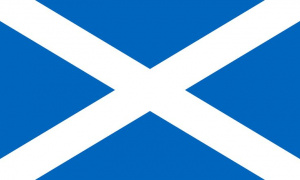Language/Scottish-gaelic/Vocabulary/Fruits-and-Vegetables
Introduction
In this lesson, you will learn the Scottish Gaelic names for common fruits and vegetables, as well as how to use them in sentences. Knowing the names of these foods is an important part of daily life, especially when shopping for groceries or ordering food at a restaurant. By the end of this lesson, you will have a solid foundation in Scottish Gaelic vocabulary related to food and drink.
Fruits
In this section of the lesson, you will learn the Scottish Gaelic names for several common types of fruit. Study the vocabulary carefully, and try to practice using these words in sentences on your own.
Scottish Gaelic → Pronunciation → English Translation
| Scottish Gaelic | Pronunciation | English |
|---|---|---|
| seabhag | ʃa.vaɡ | raspberry |
| lus na glinne | lʌs.nə.ɡli.nʲə | bilberry |
| plaimean | pla.meɲ | plum |
| sùbh-làir | suːv.laːrʲ | pineapple |
| seagal | ʃaə.ɡal | cherry |
| geòidh | ɟɔː.ɪ | gooseberry |
| orainse | ɔ.rɛnʃə | orange |
| càlman | kaːl.mən | raspberry (in Lewis) |
Sample Sentences
Here are some sample sentences using the fruit vocabulary above:
- Tha plaimean ann am bìdh. (There are plums in the food.)
- Chaidh mi a-mach a' chiad latha den Fhaoilleach agus chunnaic mi an dà chuid seabhaig is lusan nan gleann. (I went out on the first day of January and saw both raspberries and bilberries.)
- Tha seagal agam airson an-diugh. (I have cherries for today.)
- Tha an sùbh-làir himpearrach airson neach sam bith airson ithe. (The pineapple is appropriate for anyone to eat.)
- Dh'ith sinn cailleachan geòidh sa chathaich. (We ate gooseberries in the garden.)
Vegetables
In this section of the lesson, you will learn the Scottish Gaelic names for several common types of vegetables. As with the fruit vocabulary, study the words carefully and try to practice using them in sentences on your own.
Scottish Gaelic → Pronunciation → English Translation
| Scottish Gaelic | Pronunciation | English |
|---|---|---|
| brocaili | brɔ.kalʲi | broccoli |
| càl | kaːl | cabbage |
| caraid | ka.ratʃt | carrot |
| cearcall | kʲar.kal | turnip |
| eabhair | ja.vɛr | asparagus |
| feòlaire | fʲoː.lɛrʲ | cauliflower |
| sùrdag | suːr.tak | celery |
| tormod | tɔr.mɔtʃ | potato |
Sample Sentences
Here are some sample sentences using the vegetable vocabulary above:
- Bidh mi a' coiseachd gach maduinn agus bidh mi a' fuireach san fhoghar. Agus 's e brocaili an fheòir as motha a tha agam a-nis. (I walk every morning and stay in the fall. And my biggest inflorescence is broccoli.)
- Chuala mi nach bi feòlaire ro mhath airson bathair. (I heard that cauliflower is not good for cows.)
- Is toigh leam tormod is cearcall anns an aireamh fheòil. (I like potato and turnip in my meat number.)
- Dh'ith mi càl aig tea-time. (I ate cabbage at tea-time.)
- Tha an t-sùrdag agam do bhrothair-sa. (I have celery for my brother.)
- Dh'ith sinn sinnean agus caraid 's caoraich. (We ate turnips and carrots with sheep.)
Conclusion
Congratulations! You have learned the names for several common fruits and vegetables in Scottish Gaelic. Keep practicing these words and using them in sentences to improve your vocabulary and grasp of the language. In the next lesson, you will learn about meals and beverages in Scottish Gaelic.
Other Lessons
- Months of the Year
- Geography
- Fruits
- Body
- Travel Related Phrases
- Family Members
- City
- Animals
- Clothes
- Introducing Yourself
Sources

